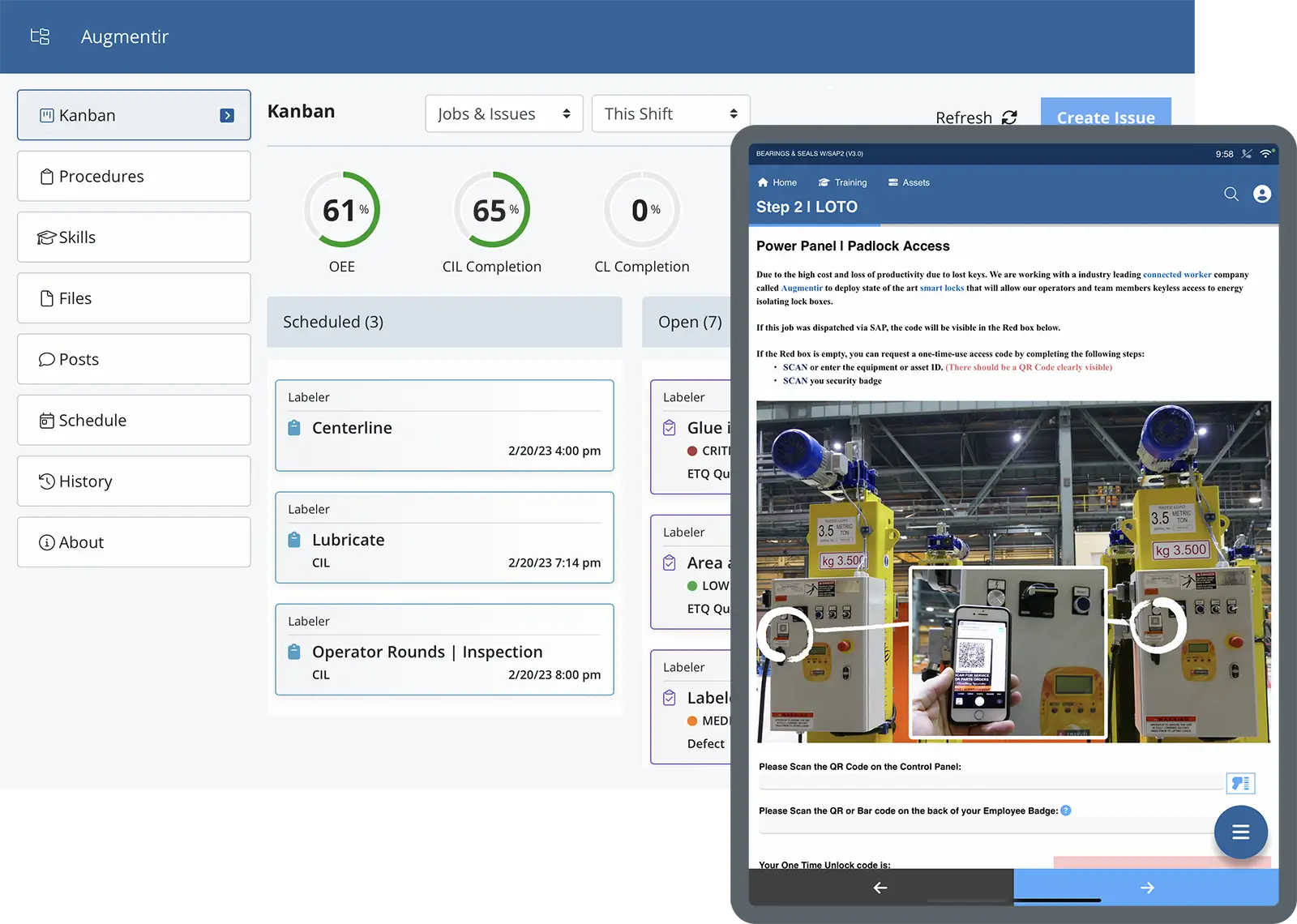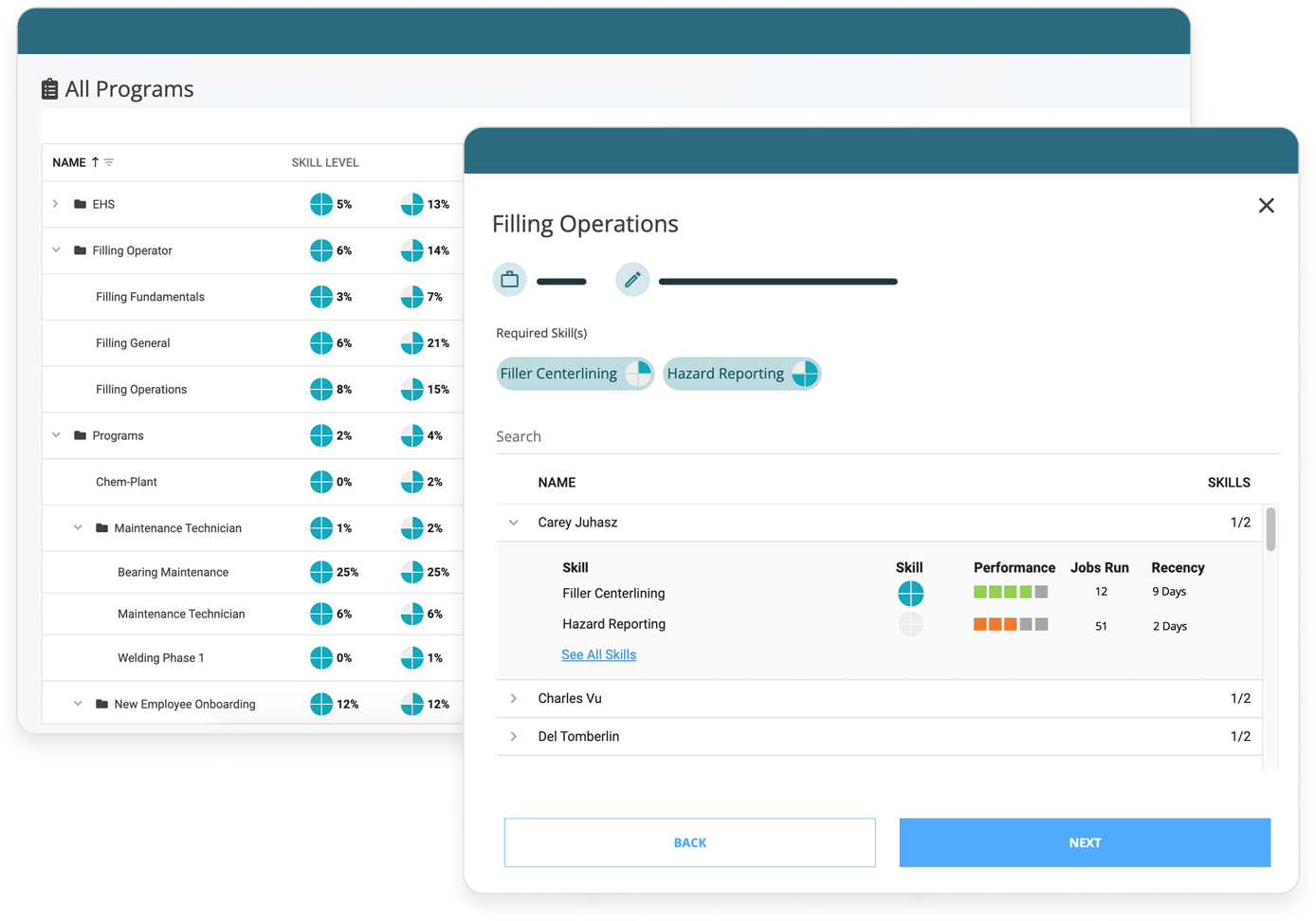Prior to Augmentir, our founding team was involved in founding Wonderware Software in 1987, Lighthammer in 1997, and ThingWorx in 2008. In 2017, we recognized that the technology and market forces were aligned yet again, for a fourth industrial software revolution. A revolution that focused on increasing the productivity and quality of processes involving front-line workers.
Times have changed since 1985 when relying on tribal knowledge was the only option for a frontline worker, and today, via digital transformation efforts, we are lucky enough to have new technologies and resources that enable frontline workers to do their best work in a complex world. Although taking the steps toward digital transformation can seem scary or overwhelming, the longer you wait and “do nothing”, the more difficult it becomes to modernize. Not having the proper resources or being unsure about the digital transformation process are common hesitations for most organizations.
Beginning your digital transformation is like beginning your journey to the gym after a long day. You can come up with a million excuses for not wanting to get your workout and usually, the hardest part is actually taking the first step to get there. But once you’ve started, you never regret it! According to LNS Research, most manufacturing companies have at least begun their digital transformation journey, and for those that have not, the hardest part is just taking the first step.
Here’s what doing nothing is costing you today.
“Doing nothing” is costing you $234,900 every year with 1 changeover
If you could reduce variability in the execution of one changeover you could save 15,660 hours each year.
If the variability in completing a changeover between 2 operators is 1 hour and a changeover is performed 1/day, you are losing 261 hours each year for 1 operator.
Now, let’s look at shifts – if the average variability between A-shift, and B-Shift is +1 hour and C-Shift is +2 hours – with a total of 20 frontline workers on each shift and each operator performing 1 changeover /day the variability in hours relative to A-Shift is equal to 60 hours every day and 15,660 hours each year.
Multiply that times at the national average of $15/technician, over the course of 1 year, “doing nothing” for just 1 task is costing you $234,900 in employee time alone.
Quantify increased throughput, proficiency, productivity, and quality though frontline digital transformation, and there is even more impact!
“Doing Nothing” for manual data entry is costing you $97,875 per year
If you could save 15 minutes per day for an operator by eliminating data entry, after 1 year you would save your employee 3,915 minutes!
Multiply that time across 100 employees at the national average of $15/technician, “doing nothing” is costing you $97,875 per year.
“Doing Nothing” for apprenticeship programs is costing you $5,742,00
The average time for a new unskilled hire in an apprenticeship program is 2 years. If you could reduce the time that the new hire spends in the apprenticeship by 25%, you would save 1,044 hours for each new worker you hire. Reducing apprenticeship time by 50% would save 2,088 hours for each new hire. Reducing apprenticeship by 50% for 50 unskilled new hires would save you 208,800 hours.
Multiplying that time at the national average of $15/hour across 50 new hires, “doing nothing” to reduce a 2 year apprenticeship program by 50% is costing you $1,566,000.
Quantifying the impact on the skilled workers giving their time to the apprenticeship program, at $40/hour across 50 new hires amounts to an additional $4,176,000.
Why not start today?
If increasing proficiency can pave the way towards frontline worker digital transformation and save you the cost of doing nothing, why wouldn’t you start today?
If reducing variability can pave the way towards frontline worker digital transformation and save you the cost of doing nothing, why wouldn’t you start today?
If one simple digital procedure can pave the way towards frontline worker digital transformation and save you the cost of doing nothing, why wouldn’t you start today?
The business impacts of doing something are clear:
- Accurate Data Entry
- Job Visibility
- Execution variability insight
- Downstream impact
- Decrease downtime
- Increase throughput
- Reduce/ Eliminate training
- Easily accessible documentation
With the proper AI-powered Connected Worker tools, your workers become more integrated and you gain access to a new rich source of activity, execution, and tribal data that lead to valuable insights into areas where the largest improvement opportunities exist. AI lays a data-driven foundation for continuous improvement in the areas of performance support, training, and workforce development, setting the stage to address the needs of today’s constantly changing workforce.
If you don’t start now, there’s always going to be something that happens in the next 6 months that will also prevent you. This was a trend that was occurring before the pandemic, but the pandemic has accelerated it greatly. There is pressure to keep up with the new normal and the faster you start the better equipped you will be. You could continue to fight this fire with a firehose and keep it at bay, but the fire isn’t going away until you solve the root problem.
You have an opportunity, right now! Older workers are aging out, and you’re working hard to hire new, young, bright, excited workers. These younger workers expect tech. They’ll embrace change. If not now, when?


